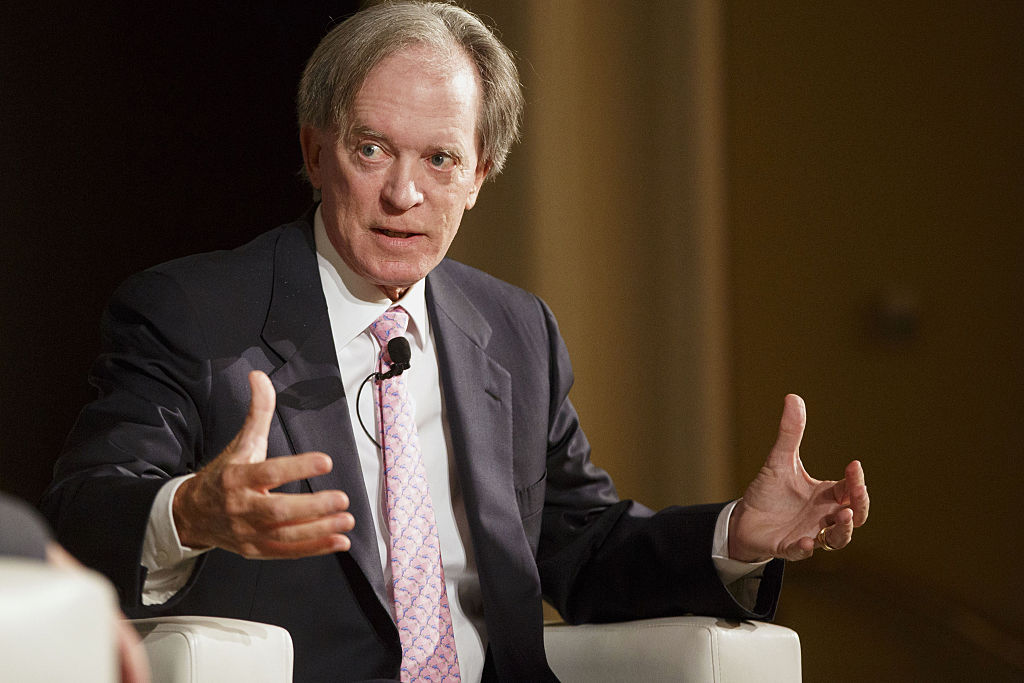'Bond King' Bill Gross and his million dollar stamp collection
Legendary investor Bill Gross, also known as the 'Bond King', has proved his mother right about philately


In May, the legendary investor known as the “Bond King”, Bill Gross, called time on the “total return” strategy that made his fortune in the 1980s. Interest rates are too low relative to the almost 16% seen in 1981 (despite what anyone coming up to renew their mortgage may say) and that approach is now defunct, he said. But Gross is also gloomy about another of his favourite strategic pastimes – stamp collecting. The hobby has “always been a function of kids and their collecting who later on become wealthy adults”, he told Bloomberg TV in June. “But… I don’t think kids are collecting stamps any more.” So, he decided to sell up.
Gross was introduced to philately when his mother gave him an album of stamps in the hope that he could sell them to pay his way through university. The stamps, however, turned out to be largely worthless. Nevertheless, Gross “wanted to prove his mother right, that stamps could be a good investment”, explains Robert A. Siegel Auction Galleries, the auction house in New York that sold Gross’s stamp collection last month.
The goal to which every serious collector aspires is to build a “complete” collection – that is, to acquire at least one of each item within their chosen field of interest. But within the world of US stamps, there can only ever be one winner at a time. That’s because there is just one privately owned 1868 one-cent “Z” Grill stamp in existence. Another has been held by The New York Public Library for almost a century and, to be sure, if the librarians ever decided to sell it, they could buy a lot of books with the proceeds.
MoneyWeek
Subscribe to MoneyWeek today and get your first six magazine issues absolutely FREE

Sign up to Money Morning
Don't miss the latest investment and personal finances news, market analysis, plus money-saving tips with our free twice-daily newsletter
Don't miss the latest investment and personal finances news, market analysis, plus money-saving tips with our free twice-daily newsletter
Gross was outbid when he tried to buy it at auction in 1998. It was snapped up by the president of the Mystic Stamp Company, Donald Sundman, for $935,000. So, in 2005, Gross bought the also incredibly rare 24¢ Inverted Jenny plate block of stamps, accidentally depicting an aeroplane flying upside down, for nearly $3 million, and traded it for Sundman’s “Z” Grill in what was described as the “greatest stamp swap of all time”. Finally, Gross had completed his collection of US stamps. On 14 June, he gave someone else the chance to complete theirs and it cost them almost $4.4 million for the privilege.
The auction record for the most expensive stamp overall is still held by the British Guiana one-cent Magenta from 1856, which fetched $9.5 million in 2014. At least there remains, as Robin Wigglesworth notes for FT Alphaville, one “arena where British securities are more highly valued than American ones”.
This article was first published in MoneyWeek's magazine. Enjoy exclusive early access to news, opinion and analysis from our team of financial experts with a MoneyWeek subscription.
Get the latest financial news, insights and expert analysis from our award-winning MoneyWeek team, to help you understand what really matters when it comes to your finances.

-
 The most influential people of 2025
The most influential people of 2025Here are the most influential people of 2025, from New York's mayor-elect Zohran Mamdani to Japan’s Iron Lady Sanae Takaichi
-
 Millions of parents are missing out on up to £720 a year in extra pension cash – are you affected?
Millions of parents are missing out on up to £720 a year in extra pension cash – are you affected?A mum who narrowly missed out on the pension boost said she “never knew the government rule existed” and wants other parents to use it
-
 8 of the best properties for sale with indoor gyms
8 of the best properties for sale with indoor gymsThe best properties for sale with indoor gyms – from a four-storey mews house in London’s Knightsbridge, to a 1920s Arts & Crafts house in Melbury Abbas, Dorset
-
 Top stock ideas for 2026 that offer solidity and growth
Top stock ideas for 2026 that offer solidity and growthLast year’s stock ideas from MoneyWeek’s columnist and trader, Michael Taylor, produced another strong performance. This year’s stocks look promising too
-
 Market predictions for 2026: Will Dubai introduce an income tax?
Market predictions for 2026: Will Dubai introduce an income tax?Opinion My 2026 predictions, from a supermarket merger to Dubai introducing an income tax and Britain’s journey back to the 1970s
-
 Stock markets have a mountain to climb: opt for resilience, growth and value
Stock markets have a mountain to climb: opt for resilience, growth and valueOpinion Julian Wheeler, partner and US equity specialist, Shard Capital, highlights three US stocks where he would put his money
-
 The steady rise of stablecoins
The steady rise of stablecoinsInnovations in cryptocurrency have created stablecoins, a new form of money. Trump is an enthusiastic supporter, but its benefits are not yet clear
-
 SRT Marine Systems: A leader in marine technology
SRT Marine Systems: A leader in marine technologySRT Marine Systems is thriving and has a bulging order book, says Dr Michael Tubbs
-
 Goodwin: A superlative British manufacturer to buy now
Goodwin: A superlative British manufacturer to buy nowVeteran engineering group Goodwin has created a new profit engine. But following its tremendous run, can investors still afford the shares?
-
 A change in leadership: Is US stock market exceptionalism over?
A change in leadership: Is US stock market exceptionalism over?US stocks trailed the rest of the world in 2025. Is this a sign that a long-overdue shift is underway?